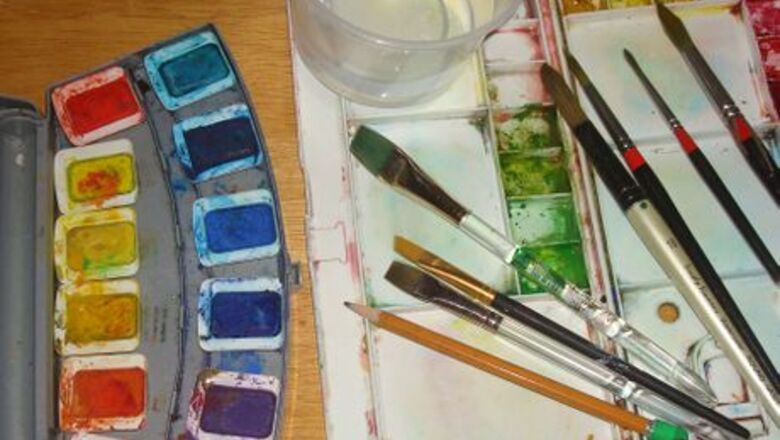
views
Preparing and Sketching
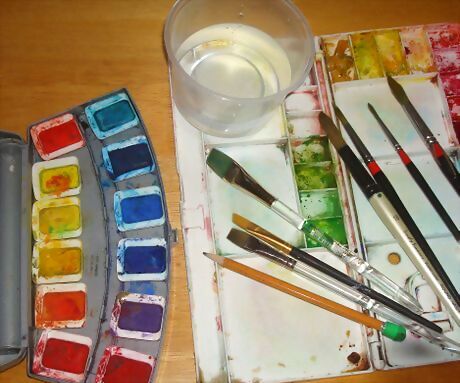
Gather your supplies and find a well-lit, quiet place to work. Try to locate yourself where you can work undisturbed over a period of hours or even a day or two. Find an array of brushes including flats in a variety of widths. Get a water vessel, tissues, and a pencil with an eraser. Have a piece of household sponge cut very small to use to stamp out windows. Use masking fluid and a small, flat brush to help you when creating the windows as well. A white wax crayon can be substituted. Either will resist the paint.

Draw out the rooftops of all your buildings first. Open an 11” X 14” pad of 140 lb. watercolor paper. Hold the paper in either orientation. Draw, freehand, a line of building roofs in pencil all across the paper, near the top. Keep it simple - just draw geometric shapes side by side with lots of variety in heights. Include many deep dips for interest. Draw another line a little up from the bottom edge of the paper to indicate where the buildings start from at the bottom. Then draw lines down from the rooftops of the buildings ending at this line to sketch out the whole building.
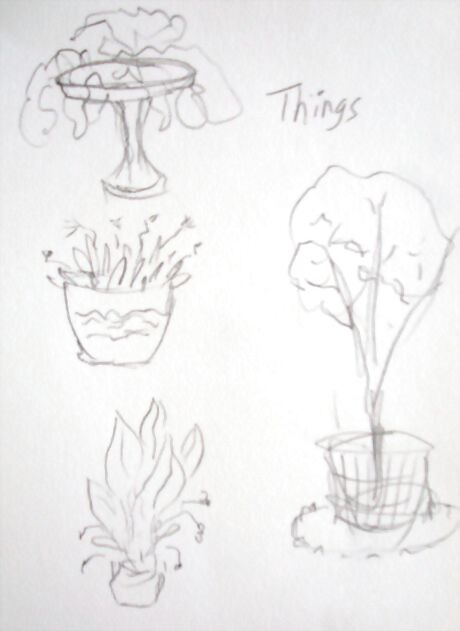
Sketch out center(s) of interest. On this sidewalk or street area, sketch a fountain or other thing that you might find in a real city. A figure or two, dog walkers, a memorial statue or sculpture, a small tree surrounded by a decorative fence, a table and chairs at a sidewalk café, a news stand, etc. Try not to place a feature in the dead center of your picture. Mask out an area for your feature object(s) (fountain, statue.) Use masking fluid and a brush to scribble out a spot for these features and protect it from the paint.

Indicate windows one of two ways. Before painting, mask out some tiny windows. Use a small, flat brush and masking fluid. Or, use a light-colored crayon (white, yellow, etc.) and draw short strokes for windows. They can be randomly placed or grouped in creative ways.
Painting
Prepare your brush. Pick up a 1” flat brush and load it with any color of well diluted paint, working from a puddle of color that you made on your palette. Do this by diluting any color with water. Don't scrimp, really fill your brush.

Paint a layer of colored stripes for the buildings. Start at the top of one of the buildings and make a continuous stroke ending it at the line at the bottom of the page. Paint a number of lines in one color, repeating this for every outline of each building you made. Change colors for different buildings if you'd like. Continue until you have a multi-colored layer of various width stripes over the entire paper. Allow this to dry. A hairdryer can help with drying the page faster. If you want to put two wet lines of color next to each other, leave a tiny sliver of dry paper between them. If colors merge, go along with it, as a classic watercolor “happy accident.”
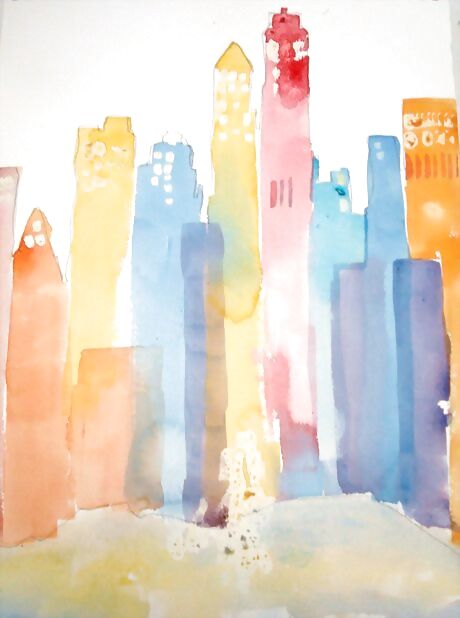
Add another layer of colored stripes to add detail to your painting. Choose a ½” flat brush and load it with any color. Do this on the now-dry painting to preserve the freshness of colors you already put down. Paint doorways, more windows, edgings and frames along the tops of some of the windows and buildings, etc. Turn the brush sideways and use it to stamp texture on one or two of the buildings. Add any amount of small details you'd like until you are satisfied that your scene is interesting and varied. Allow this to dry.
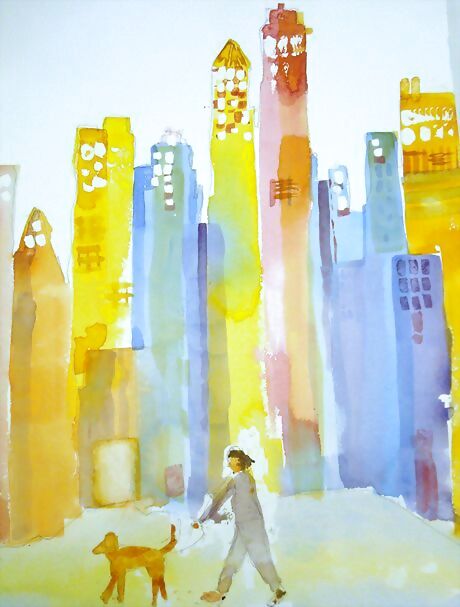
Paint the foreground. Unmask the area you preserved. Draw and paint the object(s) that you chose for visual interest. Paint the streets, the sidewalks, people, cars, or any other thing you'd find in a real city that you sketched out. Allow the piece to dry thoroughly and touch up areas that need punching up.
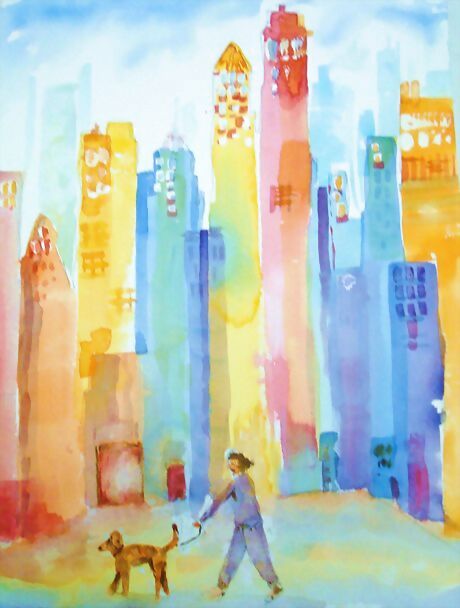
Hang the picture to view over time. It might inspire you to paint another street scene. We get new ideas from looking at what we have created. We picture things we would like to change or add. This is what keeps us painting and creating. Also, be aware that in your travels, you will see city views with new eyes. Art makes your powers of observation keener and you will find a greater appreciation and beauty in what was once considered the mundane and ordinary.




















Comments
0 comment